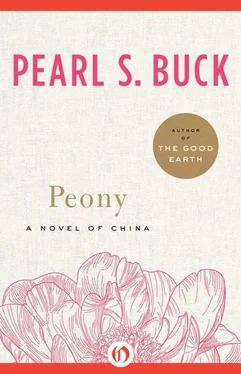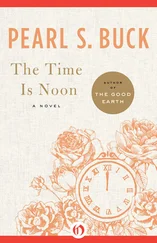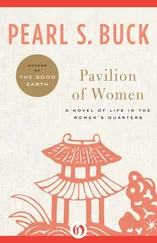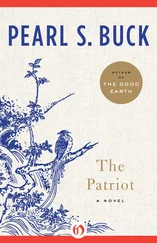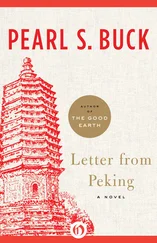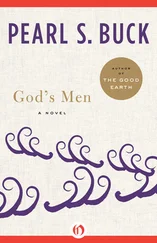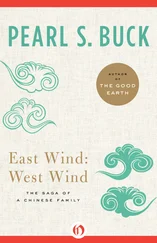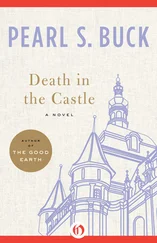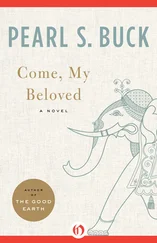Pearl Buck - Peony
Здесь есть возможность читать онлайн «Pearl Buck - Peony» весь текст электронной книги совершенно бесплатно (целиком полную версию без сокращений). В некоторых случаях можно слушать аудио, скачать через торрент в формате fb2 и присутствует краткое содержание. Год выпуска: 2012, Издательство: Open Road Media, Жанр: Современная проза, на английском языке. Описание произведения, (предисловие) а так же отзывы посетителей доступны на портале библиотеки ЛибКат.
- Название:Peony
- Автор:
- Издательство:Open Road Media
- Жанр:
- Год:2012
- ISBN:нет данных
- Рейтинг книги:3 / 5. Голосов: 1
-
Избранное:Добавить в избранное
- Отзывы:
-
Ваша оценка:
- 60
- 1
- 2
- 3
- 4
- 5
Peony: краткое содержание, описание и аннотация
Предлагаем к чтению аннотацию, описание, краткое содержание или предисловие (зависит от того, что написал сам автор книги «Peony»). Если вы не нашли необходимую информацию о книге — напишите в комментариях, мы постараемся отыскать её.
Peony — читать онлайн бесплатно полную книгу (весь текст) целиком
Ниже представлен текст книги, разбитый по страницам. Система сохранения места последней прочитанной страницы, позволяет с удобством читать онлайн бесплатно книгу «Peony», без необходимости каждый раз заново искать на чём Вы остановились. Поставьте закладку, и сможете в любой момент перейти на страницу, на которой закончили чтение.
Интервал:
Закладка:
Discovery by the Jesuits
Aside from these silent testimonies in stone and early Arab and European sightings of Jews in China, nothing else remains to tell us the story of the Chinese Jews through the 17th century. Then a funny thing happened in 1605…
When the Jesuit missionary Matteo Ricci entered China in 1583, he could scarcely have imagined that barely a quarter of a century later he would be the first Westerner to come face to face with a Chinese Jew, and bring the continued existence of this community to the attention of the West. One summer day in 1605, a Chinese Jew by the name of Ai Tain was on his way to Peking to take the civil service exam. Along the way he had read a book called “Things I Have Heard Tell” that there were Europeans living in the Middle Kingdom who proclaimed their faith in the one true G-d, yet steadfastly maintained they were not Moslems. What else could they be, he reasoned, but Jews, having never heard of such a thing as Christianity.
Ai Tian determined to locate these men, and when he reached the capital he inquired and was directed to the Jesuit rectory. After knocking on the door and being greeted by none other than Ricci himself, Ai proudly proclaimed himself to be his co-religionist, never once using the term “Jew.” Ricci must have been equally delighted, thinking he had come face to face with a Chinese Christian, even before serious proselytizing efforts were underway in China.
Writing in his diary a few years later, Ricci, referring to himself in the third person, recalls the comedy of errors which then ensued:
“On entering our home he seemed to be quite excited over the fact, as he expressed it, that he professed the same faith that we did. His whole external appearance, nose, eyes, and all his facial lineaments, were anything but Chinese. Father Ricci took him into the church and showed him a picture above the high altar, a painting of the Blessed Virgin and the child Jesus, with John the Precursor, praying on his knees before them. Being a Jew and believing that we were of the same religious belief, he thought the picture represented Rebecca and her two children, Jacob and Esau, and so made a humble curtsy before it. He could not refrain, as he remarked, from doing honor to the parents of his race, though it was not his custom to venerate images. This happened on the Feast of St. John the Baptist.
The pictures flanking the altar were those of the four Evangelists and the Jew asked if they were four of the twelve children of the one represented on the altar. Father Ricci, thinking that he had made reference to the Apostles, nodded in agreement. Actually, however, each one was mistaken as to what the other had in mind. When he brought the visitor back to the house and began to question him as to his identity, it gradually dawned upon him that he was talking with a believer in the ancient Jewish law. The man admitted that he was an Israelite, but he knew of no such word as Jew. It would seem from this that the dispersion of the ten tribes penetrated to the extreme confines of the East. Later on [Ai] saw a royal edition of the Bible … and though he recognized the Hebrew characters he could not read the book. We heard from him also that there were ten or twelve families of Israelites in his home town and a magnificent synagogue, which only recently they had renovated at a cost of ten thousand gold pieces. In this same temple, as he related, the five books of Moses, namely the Pentateuch, had been preserved in the form of scrolls, and with great veneration, through a period of five or six hundred years. In Hamcheu … he claimed there were a far greater number of families, with their own synagogue, and others scattered about, who had no place of worship because their numbers were almost extinct.”
Ricci was also asked to return with Ai to Kaifeng and become their Rabbi, since he knew so much about Judaism — the only stipulation being that he had to promise to abstain from eating pork! Through this chance encounter it was learned that the Jews had a full religious life with a synagogue and a rabbi, and observed all the usual customs and holidays as did their counterparts in the West. Other Jesuits whom Ricci sent to Kaifeng to confirm what the Jew Ai Tian said, did just that. Unfortunately, the great flood of 1642 destroyed the synagogue and scattered Kaifeng’s Jewish inhabitants for close to a decade. The Jesuits who had begun to live in their midst and record what they saw were killed by the waters.
During the early part of the 18th century, several other Jesuits were sent to Kaifeng with the specific intention of procuring a copy of the Torah belonging to the Chinese Jews. At this time in Europe it was believed that the rabbis of the Talmudic era had purposely excised out of the Torah, references to Jesus as the Messiah in specific terms. If they could only locate the Kaifeng Torah, untouched by the corrupt European versions, the specific portions could be found. Thus, the Jews in Europe would see the error of their ways and how their own rabbis had deceived them, and would come to embrace Christianity.
The Jesuits who did get to see the Kaifeng Torah, however, had to concede that, indeed, it was exactly like that of the European Jews, with not one letter altered. The same Jesuits also left a precious legacy in the form of sketches of the synagogue itself, both its interior and its exterior. They noted that the synagogue faced West, towards Jerusalem, and that the Jews turned in this direction when they prayed. From the outside, the synagogue looked as though it were any other Chinese temple, replete with archways and courtyards. Of the many memorial halls, the very innermost one held the Ark of the Covenant. Two marble lions flanked the pathway to the Front Hall, in between which was a large iron incense tripod — a Buddhist, rather than Jewish, convention. There was a hall for the kosher preparation of meals, a Hall of the Founder of the Religion, a Hall of the Holy Patriarchs, ancestral halls of the Zhao and Li clans, and memorial archways of the Zhao and Ai clans.
Inside was a main ceremonial table on which were placed censers, flower vases and candlesticks. Behind this was the Chair of Moses, upon which the Torah was placed for ceremonial reading. Also evident were the Imperial Tablets mentioned earlier, and many wall inscriptions in Chinese.
These early Jesuits were able to preserve for posterity many of the stele inscriptions and writings of the Chinese Jews. Their reports remain the only sources of first-hand information on the daily life of the Chinese Jews which captured their existence in both the heyday and twilight of their lives as a religious community. While their knowledge of Hebrew was said to be somewhat tenuous at this stage, the Jews nevertheless held fast to their religion and to each other, taking great pride in their beautiful synagogue, which was captured for eternity in the sketches made by Father Jean Domenge in 1722. The synagogue had stood by now for 600 years. Although obvious signs of assimilation into their Confucian surroundings abounded, their ties to their Jewish ancestry proved too strong, and attempts to purchase copies of the Kaifeng Torah at this time were futile.
In 1723 the missionaries were forced to leave China, and a general ban on proselytizing was enforced as anti-foreign sentiment began to set in. It would not be until 1850 that foreigners were able to have direct contact with the Chinese Jews again.
Historical Setting of Peony
It is towards the end of this time of suspended communication with the outside world that Pearl S. Buck set the novel Peony. The primary intimation we have for its initial setting as being in the last decade of the 18th century or possibly the first decade of the 19th century, is the fact that the last rabbi was still alive, albeit in his last years. Scholarly research has ascertained that the last rabbi died between 1800 and 1810, thus verifying the time frame in which the story of Peony begins.
Читать дальшеИнтервал:
Закладка:
Похожие книги на «Peony»
Представляем Вашему вниманию похожие книги на «Peony» списком для выбора. Мы отобрали схожую по названию и смыслу литературу в надежде предоставить читателям больше вариантов отыскать новые, интересные, ещё непрочитанные произведения.
Обсуждение, отзывы о книге «Peony» и просто собственные мнения читателей. Оставьте ваши комментарии, напишите, что Вы думаете о произведении, его смысле или главных героях. Укажите что конкретно понравилось, а что нет, и почему Вы так считаете.
